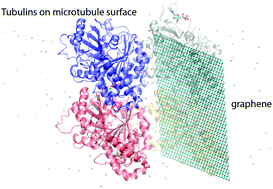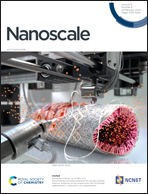Potential interference with microtubule assembly by graphene: a tug-of-war
Abstract
With the ever-increasing demand for graphene-based materials and their promising applications in numerous nanotechnologies, the biological effects of graphene on living systems have become crucial and ought to be well understood. Previously, both the cytotoxicity of graphene towards biological cells and its potential application as a nanomedicine have been revealed experimentally and theoretically. Besides many existing anticancer drugs that target microtubules, here we investigate the possibility of using graphene as a nanomedicine, which could alter the dynamic assembly and disassembly of a microtubule. We found that when a graphene nanosheet is at the hydrophilic interface of two neighboring heterodimers (containing α and β tubulins), it can pull one dimer away from the other through a “tug-of-war” mechanism, driven by the strong dispersive interaction exerted by the surface of the graphene nanosheet. This work demonstrates that based on the existing methods for mitigating graphene's cytotoxicity (already developed in this field), a graphene-based nanomedicine could be designed to target microtubules of cancer cells and induce cell apoptosis.

- This article is part of the themed collection: Theoretical Modelling at Nano-bio Interfaces


 Please wait while we load your content...
Please wait while we load your content...